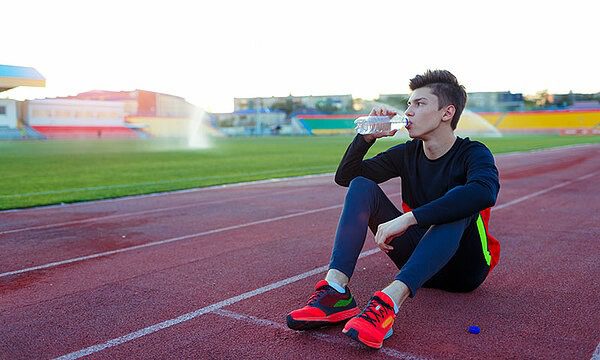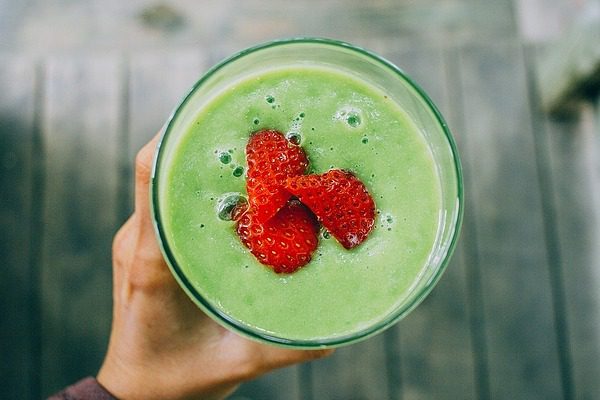Youth Sports Part 2: Drink to Thirst Doesn’t Work & Other Surprising Truths About Hydration for Young Athletes
Sports PerformanceABOUT THE AUTHOR

Phil White
Phil White is the co-author of Waterman 2.0 (with Dr. Kelly Starrett), The 17 Hour Fast (with Dr. Frank Merritt), Unplugged (with Dr. Andy Galpin and Brian Mackenzie) and Game Changer (with Fergus Connolly). He writes for Train Heroic, HANAH, Momentous, XPT, Onnit, StrongFirst, TRX, McGregor FAST, and other leaders in human performance. In a previous life, Phil was nominated for a screenwriting Emmy. He lives with his wife and two sons in the mountains of Colorado. Connect with Phil at www.philwhitebooks.com
For this second part in the series, we’re shifting our attention from behavior to physiology – namely, to hydration for young athletes.
To help explode some myths, avoid common pitfalls, and create best practices for coaches and parents alike, we brought in one of the world’s leading hydration and thermoregulation experts, Stacy Sims.
I first met Stacy three years ago when I interviewed her for my book with Kelly Starrett, Waterman 2.0. Since then, she has relocated from the Bay Area to New Zealand’s North Island, where she lives in a small town that’s about two and a half hours south of Auckland with her family. In addition to writing the acclaimed hydration, nutrition, and training book Roar, and running her company Osmo Nutrition (trusted by the likes of three-time world champion cyclist Peter Sagan), Stacy is a senior research fellow at the University of Waikato. She works with pro and amateur athletes and teams, including the New Zealand Rugby Sevens academy program.
Let’s see what Stacy has to say about the importance of adequate hydration and rehydration for junior athletes.


// What happens when kids get dehydrated?
Their physical and cognitive performance starts to decline very rapidly. If they’re dehydrated going into a match or practice, they’re much more likely to get injured. We also see their attention start to wane and wander, which isn’t ideal as a lot of kids have trouble focusing anyway. Another big issue is mood instability. A dehydrated child is likely to have mood swings, be irritable and ill-tempered, and lose their patience quickly.
If you’re a coach and you see behavioral issues on the field, at least some of them are likely due to the fact that your young players are dehydrated.
// Does drinking to thirst work for kids, and if not, why?
No, it doesn’t because children’s thirst and thermoregulation mechanisms are still developing. If they wait to drink until they’re thirsty, they’re already likely to be dehydrated to the degree that it’s affecting their reaction times, mood, and physical capability to perform.
// What do you think is a better strategy?


Sip, sip, sip.
As kids’ stomachs are a lot smaller than adults’, they shouldn’t be chugging a lot of fluids at one time. But they need be reminded to sip water before, during, and after practice. If it’s hot and humid, then parents should put a pinch of sea salt in the water to help the body absorb it better.
// How can coaches improve how they handle young players’ hydration?
Don’t be a hard ass and try to deny or restrict water intake. Instead, it’s best to schedule regular water breaks throughout a practice. Just letting kids bring their own water bottles isn’t enough, as they’re not going to get thirsty like adults do. You have to remind them to drink regularly. It’s also a good idea to have orange slices or some kind of watery fruit. Like the salt I mentioned a minute ago, a little natural sugar helps the body put water to better use.
And if a kid says they need a drink, let them take one no matter what’s going on in practice. As children don’t sweat very much, we see them get very red in the face because they blow off excess heat through vasodilation. So if you see a child looking flushed in the cheeks, it’s most likely an indicator that they need to pause and have some water. They also might need to rest under a tree or some other kind of shade for a little while. They’ll be able to listen, focus, and perform better if they stay hydrated.
// What’s your stance on sports and energy drinks for kids?
Just like soda, they’re a no-go. There’s way too much sugar in sports drinks, plus a lot of artificial colors and preservatives. Kids’ microbiomes are more delicate, and if you’re putting a bunch of junk ingredients into a hot and cranky stomach, it can be very disruptive. With energy drinks, you get all of that stuff plus way more caffeine than a kid can handle, which can be exacerbated by a genetic predisposition to not process caffeine well. We see that for a lot of children, particularly pre-teens and teens: Frappuccinos and other super-sugary coffee shop drinks have replaced sodas, even though they’re often just as bad, if not worse, for developing bodies.
If you are going to let your kids have caffeine, make some cold brew green or black tea, which contains beneficial catechins and other health-promoting properties.
And if you’re trying to wean your kids off sports drinks, think about what their favorite flavor is and recreate that by putting some real fruit in their water. Or some cucumber slices and herbs like that water you see at spas and in hotel lobbies. My daughter loves it when I infuse her water with strawberry and rhubarb. You can also squeeze a little citrus juice into kids’ water bottles before practices and games.
// How can parents and coaches help kids hydrate after they’re done for the day?
Just like it’s important that kids show up well hydrated and sip water throughout a practice, it’s also essential that we top up their fluid level afterwards. This is particularly important if they’ve taken part in a multi-game tournament that’s lasted all day.


As well as drinking more water with sea salt and a little fruit juice, you should encourage them to eat watery fruits and vegetables. Some children have a hard time with veggies, in which case you can sneak them into smoothies. If you put some kale or spinach into a “funky monkey,” the banana and peanut butter will mask the taste of the vegetables, but they’ll still get the benefits. It’s got to be palatable or they’re going to push it away. Try to switch up what you put in so they’re getting a wide variety. I’m not the biggest fan of dairy, but a small serving of organic, low-sugar chocolate milk will provide some protein and help with rehydration.
Too often with active kids we focus all our attention on getting food into their bodies because we know they’re burning extra calories but neglect rehydration, which is even more crucial.
Are you a better coach after reading this?
More coaches and athletes than ever are reading the TrainHeroic blog, and it’s our mission to support them with useful training & coaching content. If you found this article useful, please take a moment to share it on social media, engage with the author, and link to this article on your own blog or any forums you post on.
Be Your Best,
TrainHeroic Content Team
HEROIC SOCIAL
HEROIC SOCIAL
TRAINING LAB
Access the latest articles, reviews, and case studies from the top strength and conditioning minds in the TH Training Lab

